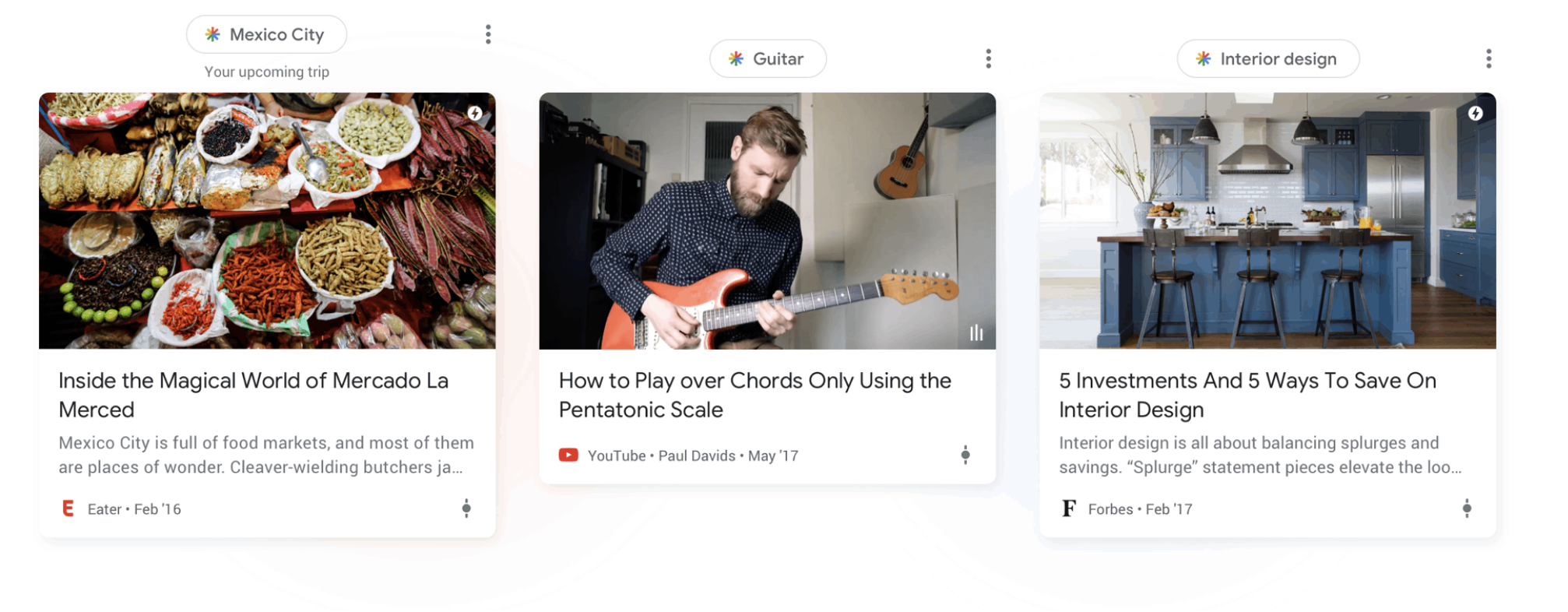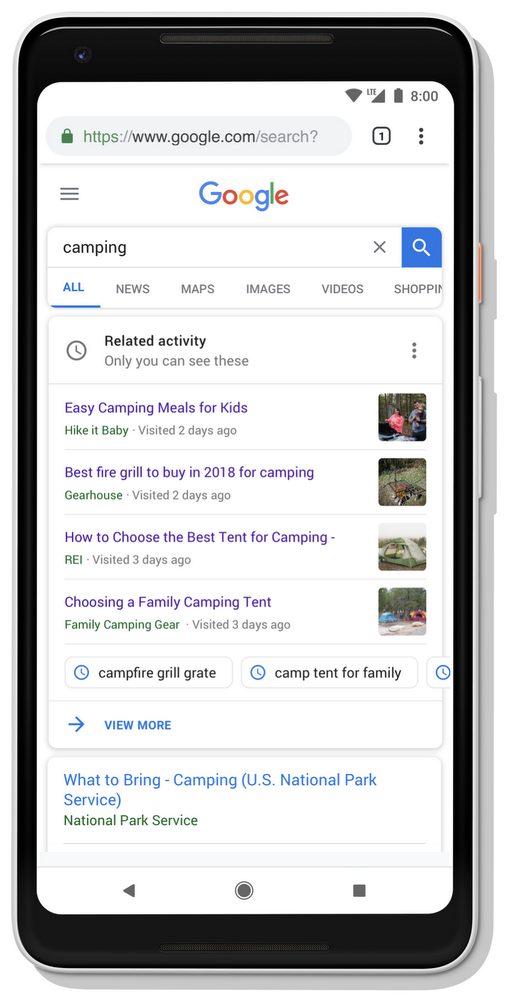7 Big Google Search Changes Unveiled
Here's the top seven new features, including a Discover news feed and Stories.
At an event in San Francisco, Google announced a number of changes to its search engine. The big takeaway is that Google search is getting a lot more visual, and that the company wants to bring relevant content to the forefront.
Google also isn't shy about copying features that work for social networking platforms, such as Stories.

Discover
The most significant new feature is a new "Discover" news feed that will appear below the default Google search bar on mobile browsers. Like Facebook's news feed, Discover will show "relevant" content, rather prioritizing chronological order. Content will appear based on your engagement and browsing history.
Discover will come with a slider that you can use to increase or decrease the amount of news you're seeing. Bilingual users will be able to see Spanish items as well as those in English.

More Visual Results (including Videos)
In addition, Google is adding more visual elements to your search results. You're going to start seeing "featured videos" at the top of your results. Google's AI will generate previews of a video relevant to your search based on the most relevant parts of the clip.
Get instant access to breaking news, the hottest reviews, great deals and helpful tips.
MORE: 10 Reasons Android Beats the iPhone
Stories Are Here
You're also going to start seeing Google's "Stories" as search results. Google has been allowing some publishers to create "stories" -- phone-sized photo and video montages popularized by Snapchat, Instagram and Facebook -- since Feburary. Now, Google's AI will also create stories, which will appear in both search and image-search results.
Smarter Image Search, Lens Integration
Google has also overhauled its image search's algorithm. Images will soon be sorted by the relevance of the web results they correspond to, and image search results will contain more information about the pages they come from.
And Google images on mobile is now connected to lens. If your phone has Google Lens, you can tap the button and search for the object present in any image.
SOS Meets AI
The company also announced that it plans on using artificial intelligence to fine-tune its SOS Alerts product. Google will use "AI and significant computational power" to incorporate history, water levels, terrain and elevation of specific areas to best predict the areas most at risk of natural disaster, beginning in India. Through a partnership with India's Central Water Commission, the company will roll out early warnings to populations of at-risk areas through Google Maps and Search.
Mover Over, Indeed
The company is also introducing Pathways, a new job-search product. Inside job searches, Google hopes to include links to relevant training opportunities. The feature will roll out in Virginia first.
Bookmarking Searches
Finally, it's going to get easier to use Google for research projects.
You'll soon be able to see the previous searches you've made in your search box itself, so you can easily click back to them and get to where you left off. You'll also be able to separately bookmark search results related to your project, and Google will recommend additional content based on your bookmarks. Google is also refining its algorithm to make it easier to find more advanced knowledge as you continue your research.
As Google makes new strides in dozens of areas, it's exciting to see the original search engine along for the ride.
Monica Chin is a writer at The Verge, covering computers. Previously, she was a staff writer for Tom's Guide, where she wrote about everything from artificial intelligence to social media and the internet of things to. She had a particular focus on smart home, reviewing multiple devices. In her downtime, you can usually find her at poetry slams, attempting to exercise, or yelling at people on Twitter.
